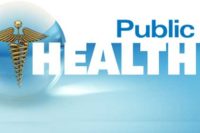The Ebola threat: How scared should you be?
Psychologists say being prepared can help us feel more in control

How government and health officials can prepare
Misinformation can create unnecessary fear
Some experts say that misinformation (in large part disseminated via the media and from uninformed “experts”) is likely to be responsible for unjustified fear. It is critical that a trusted communicator (with appropriate credentials) provide clear, easy-to-understand messages that clarify what we know, what we don’t know and what is still being studied.
Q. What is the best way public health officials can communicate warnings about a health threat without starting mass panic?
A. The evidence shows that panic is an unlikely response and only occurs when people lose connection with their entire social network. A summary of research on collective behavior by Kathleen Tierney, PhD, (Department of Sociology and Natural Hazards Research and Applications Information Center — University of Colorado at Boulder) shows that even during conditions of severe threat, “panic only occurs when individuals feel completely isolated and when pre-existing social bonds break down to such a degree that those who are in danger feel totally on their own in seeking safety.” Other research on social behavior shows that panic is more likely when those entrusted with managing disasters fail to provide accurate information about what to do and where to go during impending threats.
Credible expert spokespeople are needed
Experts on trauma reactions also say that panic is a rare and preventable response with credible communication of accurate information. According to experts who study crisis communications, it is important that the message be clear, concise and truthful (including ambiguous elements if they are present), and delivered repeatedly. It is critical that coordination of services and agencies be conducted prior to any health emergency in the United States. The agency responsible for communicating with the public and the agency’s lead spokesperson should be clearly identified, and a clear chain of command should be established. Health communications research further points to the need for identifying evidence-based strategies for delivering the message, and identifying an organization that is responsible for mental health response and recovery. In addition, public health officials need to provide clear information on possible preparation and safety actions and provide concrete recommendations about what to do. Public health officials must avoid multiple authorities with differing political and policy agendas who provide inconsistent or conflicting messages. Finally, it is important to recognize that with repeated false alarms, many will acclimate to the threat and may fail to notice genuine danger.
Those communicating an emergency need to understand that fear and other emotions may interfere with people’s decision-making and judgment. In addition, because people in crisis management often have not had to communicate about health threats of this magnitude before, it is important that they evaluate and test the messages before releasing them to the public. Lastly, social scientists should be part of emergency planning teams to assist in formulating messages and communications strategies that will achieve the desired outcomes.
Warnings are best administered in the context of concrete advice for what people can actually do to protect themselves. Information in the absence of concrete action is far less effective.
Experts on risk and decision-making can identify what is critical to convey to the different audiences. Young people have different information needs than do older people. Those with children or those taking care of elderly parents, those with health problems, and those who are away from home at the time of the emergency all have different information needs. Psychologists and other behavioral scientists can identify these different groups’ belief systems and aid in designing comprehensible messages and evaluate their success.
Furthermore, research shows that people listen to messages more often when they come from professional experts rather than when they come from politicians, particularly when the messages are emergency messages and the audiences are racial/ethnic minority groups. Also, the “public” is not a monolithic entity; some individuals are more vulnerable than others (e.g., individuals with prior mental health difficulties, the infirm, refugees, etc.), and therefore it is important to target services to those who need them the most.
Researchers who have studied communication find that certain ways of presenting information increase the perception of risk and thus fear. Specifically, people are more fearful when they see individuals or case studies similar to themselves, rather than statistics. And the greater the lack of perceived control associated with the fear message, the greater the fear and discomfort. Thus, it is important to communicate a reason for concern, but it is also important to explain clearly how to prevent what is feared by including tactics or strategies for controlling the feared situation. Also important is reminding people of the degree of risk presented by the situation, e.g., the odds of the event’s occurrence based on their life circumstances.
Psychologists who specialize in how the design of warnings affects human behavior have learned that people want easy-to-comprehend information and access to more information if they want it. The news media will play a critical role if a health emergency occurs. Information flow to the public about very bad news should not be controlled in the name of trying to avoid an outbreak of mass panic. The public should be armed with information.
The information from this advisory was compiled from the following experts:
Michael Wogalter, PhD, professor, Ergonomics and Experimental Psychology Program and director, Cognitive Ergonomics Laboratory, North Carolina State University
Kathleen Tierny, PhD, professor of sociology, Department of Sociology and Natural Hazards Research and Applications Information Center — University of Colorado at Boulder
Roxane Cohen Silver, PhD, professor of psychology, Department of Psychology and Social Behavior and Department of Medicine, University of California, Irvine
Vicki Mays, PhD, MSPh, professor of psychology, University of California, Los Angeles
Laura Kubzansky, PhD, assistant professor, Department of Society, Human Development and Health, Harvard School of Public Health
Toni Vaughn Heineman, DMH, clinical associate professor of pediatrics and psychiatry, University of California, San Francisco, private practice
Margaret Gibbs, PhD, professor of psychology, School of Psychology, Fairleigh Dickinson University, private practitioner
Scott Geller, PhD, director for applied behavior systems, Department of Psychology, professor of psychology, Virginia Polytechnic Institute and State University
The American Psychological Association, in Washington, D.C., is the largest scientific and professional organization representing psychology in the United States. APA's membership includes nearly 130,000 researchers, educators, clinicians, consultants and students. Through its divisions in 54 subfields of psychology and affiliations with 60 state, territorial and Canadian provincial associations, APA works to advance the creation, communication and application of psychological knowledge to benefit society and improve people's lives.
Looking for a reprint of this article?
From high-res PDFs to custom plaques, order your copy today!







